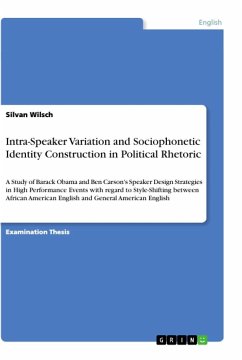Seminar paper from the year 2015 in the subject Didactics - English - Pedagogy, Literature Studies, grade: 1,3, RWTH Aachen University, language: English, abstract: One of the most investigated topics in Second Language Acquisition (SLA) is the concept of the native speaker (cf. Cook 2008, James and Leather 1996). There is a roiling debate on the meaningfulness of the native speaker as the target of teaching pronunciation. Following Gonzáles-Nueno (1997), the ultimate goal in teaching is to make the student "sound like a native speaker" (261). On the other side, Abercrombie (1991: 93) argues in favour of the comprehensibility. The main goal of teaching L2 (second language) pronunciation is therefore to sound "comfortably intelligible" (ibid.)In this paper I will discuss the reasonableness of teaching native-like pronunciation. Should the native-speaker be the target of teaching pronunciation? What are conceivable disadvantages? In a first step, it is essential to give a definition of the native speaker. Secondly, in chapter 3.1, these definitions will be analysed with regard to the research question. Chapter 3.2 analyses the general goals of teaching a second language. These goals will be referred to the issue of teaching L2 pronunciation. Furthermore, I will provide a survey from Waniek-Klimczak (2002) about students' attitudes towards the issue of accent, pronunciation in general, and pronunciation teaching and compare the results with the general goals of L2 teaching. Chapter 3.3 will focus on the concept of Received Pronunciation (RP). I will analyse the advantages and disadvantages of teaching RP to L2 learners. As a last point, I will take up Major's (2001: 28) statement that everybody speak an interlanguage and discuss it. In the conclusion I will summarize the results of the analysis and try to give a final statement.








